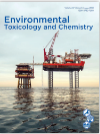The Effects of a Mixture of Copper, Nickel and Zinc on the Structure and Function of a Freshwater Planktonic Community

Scientific abstract
It is generally assumed that as long as the majority of species experiences no direct adverse effects due to a single substance (i.e. Potentially Affected Fraction, PAF < 5%), no significant structural or functional effects at community‐level are expected to occur. Whether this assumption holds for mixed metal contamination is not known. Here, we tested this by performing a microcosm experiment in which a naturally occurring freshwater planktonic community was exposed to a Cu‐Ni‐Zn mixture for 8 weeks, and in which various structural and functional community‐level traits were assessed. In the low mixture concentration treatments (i.e., Ni‐Zn mixtures, because there was no difference of Cu concentrations in these treatments with the control), community‐level effects were relatively simple, only involving phytoplankton species groups. In the high mixture concentration treatments (Cu‐Ni‐Zn mixtures), community‐level effects were more complex, involving several phytoplankton and zooplankton species groups. Multi‐substance PAF (msPAF) values for all mixture treatments were calculated by applying the concentration addition model to bioavailability‐normalised single‐metal species sensitivity distributions (SSD). Consistent effects on the structural traits community composition, abundance of zooplankton species groups, species diversity, and species richness and on the functional trait dissolved organic carbon (DOC) concentration (as a proxy for the microbial loop and pelagic food web interactions) were only observed at msPAF values above 0.05, i.e. in the Cu‐Ni‐Zn mixture. However, consistent effects on the abundance of various phytoplankton species groups (structural traits) and on two measures of community respiration, i.e. overnight ▵DO and ▵pH (functional traits) were already observed at msPAF values of 0.05 or lower, i.e. in the Ni‐Zn mixture. This indicates that the threshold msPAF value of 0.05 was not for all community‐level structural and functional endpoints protective against metal mixture exposure in our study. A possible explanation for this result is the mismatch between the species in the SSD and those in our microcosm community. Indeed, our data suggest that the presence of one single dominant and very Zn and/or Ni sensitive species in the investigated community, i.e. a cyanobacteria of the genus Oscillatoria, which is not represented in the SSD of these metals, was probably the driver of all observed effects at or below an msPAF of 0.05. Overall, our results show that SSDs are not necessarily a good predictor of community‐level effects for all types of communities and that the presence of dominant sensitive species may result in significant, consistent effects on certain structural and functional community‐level endpoints at or below an msPAF value of 0.05, which is generally considered protective in many regulatory frameworks.
Full reference (link):
Van Regenmortel, T. , Van de Perre, D. , Janssen, C. R. and De Schamphelaere, K. A. (2018), The Effects of a Mixture of Copper, Nickel and Zinc on the Structure and Function of a Freshwater Planktonic Community. Environ Toxicol Chem. Accepted Author Manuscript. . doi:10.1002/etc.4185
